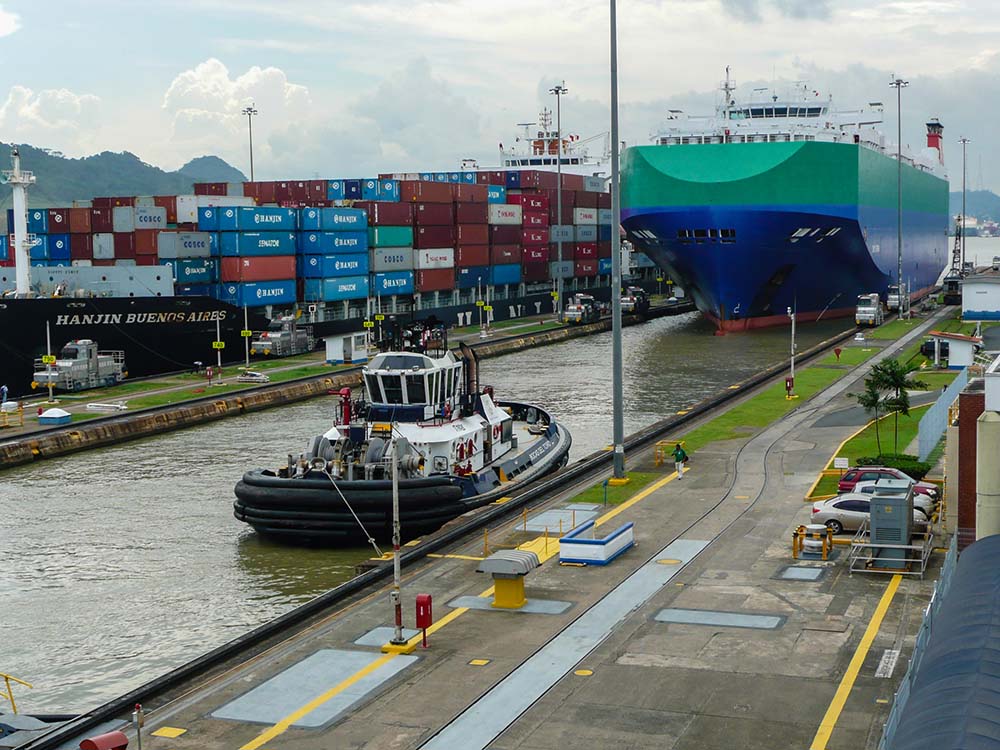… rainfall patterns expected to normalise in 2024
2024, January 31: No further reduction in the volume of ship traffic through the Panama Canal is expected before April when current drought ends and lakes are replenished.
Ship traffic through the Panama Canal was severely reduced (from 38 to 24 ships per day) in response to harsh drought conditions in 2023, attributed to the weather phenomenon referred to as El Niño. The drought reduced water levels in rivers and feeder streams that replenish the lakes that are integral to the Panama Canal’s transit operations, forcing the Panama Canal Authority to conserve by reducing the volume of traffic using the locks.
 By some estimates, more than 70% of all ships going through the Panama Canal are destined to or coming from ports in North America. And 40% of all U.S. container traffic traverse the Canal’s massive locks. And that’s just North American traffic. Cargoes transiting the Panama Canal are also destined for countries in Central and South America and the Caribbean. Given the volume of cargo that passes through the Panama Canal, the function and effectiveness of this facility is obviously vital to economic growth in the Western Hemisphere. And so, reduction of ship traffic by more than 60% has understandably created some alarm.
By some estimates, more than 70% of all ships going through the Panama Canal are destined to or coming from ports in North America. And 40% of all U.S. container traffic traverse the Canal’s massive locks. And that’s just North American traffic. Cargoes transiting the Panama Canal are also destined for countries in Central and South America and the Caribbean. Given the volume of cargo that passes through the Panama Canal, the function and effectiveness of this facility is obviously vital to economic growth in the Western Hemisphere. And so, reduction of ship traffic by more than 60% has understandably created some alarm.
As Panama enters the 2024 ‘dry season’ when no significant amount of rain, if any, is expected, the Panama Canal Deputy Administrator, Ilya Espino De Marotta, sought to assuage concerns in North America. In a recent (January 31, 2024) interview on the PBS Television network about the probability of further reduction in ship traffic transiting the Panama Canal, she said: “No. Actually, we are forecasting that we will stay at 24 until the end of April (or) beginning of May when, hopefully, rainy season starts again.”
Referring to meteorological forecasts by the National Oceanic and Atmospheric Administration (NOAA) that El Niño is weakening, the Panama Canal executive said she expected rainfall patterns to normalise by the end of this year.
“(In) October, November, December, the El Niña effect will come in, which means a lot of rain. … So we don’t think that we will have a problem coming rainy season next year.”
In its 110-year history, the operators of the Panama Canal have never found it necessary to restrict the volume of ship traffic transiting the isthmus. []
#PanamaCanal #Caribbeanshipping #ClimateChange





